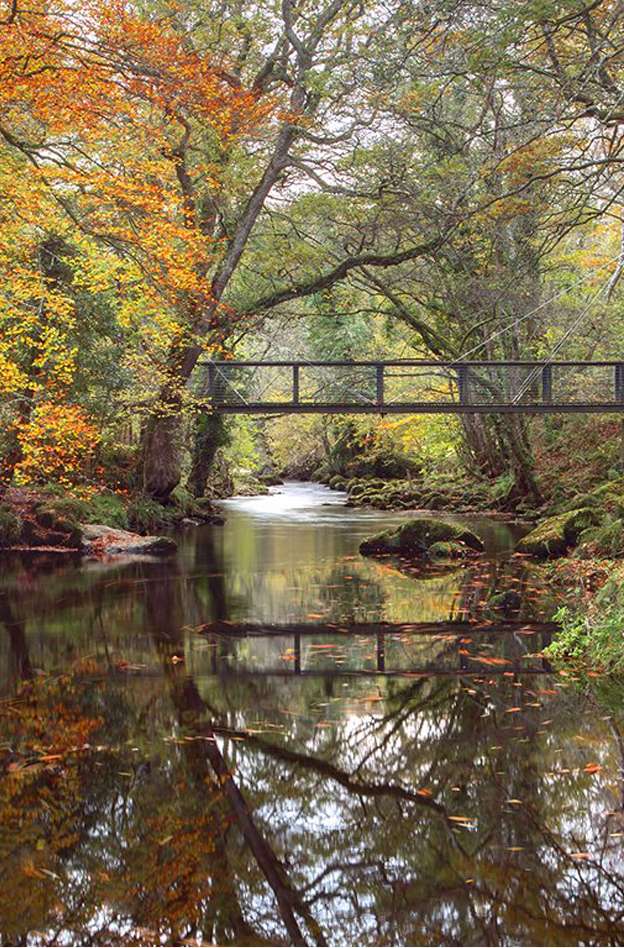Biodiversity Net Gain For Landowners
An opportunity for your land to earn a valuable income stream for 30 years without risk
Biodiversity Net Gain for landowners presents a valuable financial opportunity to lease or sell land that, until now, has had little value or a value based solely on productivity and demand for produce that can vary wildly each year. The Environment Act 2021 awards a biodiversity value to biodiversity land for sale by using it for habitat creation and restoration: this translates into a significant and reliable financial benefit for the owners and stakeholders.
Development comes at the expense of the environment. Biodiversity Net Gain compels property developers to deliver a minimum 10% biodiversity net gain as defined by DEFRA to get planning consent. The valuation is in Biodiversity Metric units devised by Natural England, a government organisation charged with the protection and well-being of England’s countryside.
Biodiversity Net Gain is the measurable improvements on the Biodiversity value of the land after construction.


Brokering between landowners and developers
Civity is a landbank brokering the biodiversity assets of landowners to off site biodiversity units liabilities of developers. We normally rent, but can occasionally buy land and produce Biodiversity Units which we sell to developers. Biodiversity Units are produced by creating or enhancing natural habitats like wildflower meadows. We are responsible for the creation and maintenance of the habitats in our care for 30 years at the same time shouldering the burden of risks caused by capricious weather conditions as well as national, regional and local legislative planning.

Types of land that qualify under Biodiversity Net Gain
We are looking for land that is, or could become, a long-term, safe and viable habitat for wildlife. It could be woodland, riverbank, arable, pastoral or another land. It should be about 10 hectares or more and accessible for habitat creation and future maintenance.
The land does not have to be contiguous. Separated, pockets of land whose total area is 10 hectares or more could qualify. If possible, the land should be on, on near the development site.



How Will Landowners Benefit From Biodiversity Units
There is only ONE way to get units as far as landowners are concerned and the chart (above) shows it. Once you enquire, we will do a thorough survey of the land and discuss the habitat options with you. Then we will make you an offer. On acceptance of the offer, a Habitat Creation Contract and Lease Agreement are drawn up, valid for at least 30 years with guaranteed payments over the period.
With the land in our landbank, we sell the Biodiversity Units to developers. Thereafter, they have no legal interest in the property whatsoever and have no say in how the land is to be used.


The Advantages of Leasing
Civity is prepared to buy land, but for many landowners, partners and stakeholders, leasing is more advantageous. Here’s why:

A lease agreement at market rates is a fully protected, regular source of income for at least 30 years.

Rent is regular and paid on the signing of the lease.

An optional Habitat Maintenance Agreement is a large additional income stream.

The landowner is paid promptly and have no risk or liability. Civity bears any liabilities the land is prone to over the 30 years.

You make an important contribution to the natural environment of your community - and get paid for it.

We work in consultation with you and your local planning authority on all matters of creation and maintenance of the leased land.

The right balance for the environment
Civity balances the needs of our wildlife together with the encroaching needs of developers. We understand the pressures on both sides of the fence.

A board of directors with experience in ecology, the built environment, finance and business.

A growing landbank that produces Biodiversity Units for developers.

The financial and practical means to manage a project for the benefit of landowners, stakeholders and the local community.

A company that works closely with local planning authorities.
We also commit to reinvesting part of our company profits into community-based projects.




Free 8-page brochure for landowners
Introducing our groundbreaking guide for landowners: “Harvesting financial reward from Biodiversity Net Gain.” With recent legal changes mandating compensation for biodiversity loss in property development, landowners hold the key to transforming low-yield land into a lucrative asset. Our handbook demystifies the concept of Biodiversity Net Gain (BNG) and guides landowners through the process of maximising their land’s potential.
Discover how Civity can help you unlock the hidden value of your land and contribute to a more sustainable future.

Biodiversity Net Gain FAQs
For Landowners
The owner or leaseholder of the natural environment/ land that provides the habitats is responsible for the creation, preservation, enhancement and maintenance of the habitat created for a minimum of 30 years from the date of the completion of the development sites. The owner of the biodiversity units could be the developer unless the land is sold to a new owner OR the landowner if they leased the land directly to the developer, local authorities OR the biodiversity broker who leased the land from the landowner. As a BNG broker, Civity assumes the responsibility of looking after the land for the 30-year BNG period. Local planning authorities are also involved in overseeing the implementation of Biodiversity Gain Plans and providing planning permission.
Landowners who deliver biodiversity units can benefit financially from the rent derived from land that, until now, produced little or no revenue. This could be increased by entering into a maintenance contract for 30 years. The revenue we offer is reliable and consistent, based on the land management rather than the resulting yield. This means that years of bad weather or unforeseen planting failures will not result in lower incomes. It is all part of restoring the wild. Other benefits include no loss of facilities and the contribution the landowner makes to the ecology of the region.
Only a qualified ecologist can value the biodiversity value of the land. You could find one on the web, your professional advisor might help, OR you could contact Civity here.
The potential biodiversity net gain value of your land in Natural England will depend upon a number of variables, including:
- The area of the land
- Its accessibility
- Its current use as habitat banks
- Its potential as a habitat creation
- The condition of the land
- The type of land (woodland, riverbank, scrubb, arable etc)
- The rarity of the species that already inhabit the land
- The proximity to nearby development projects/ nationally significant infrastructure projects
- Its vulnerability to extreme weather
The Environment Act demands that, if possible, Biodiversity Units come from within the development site. If this is not possible, then adjacent to the site or nearby. If that is not possible, other biodiversity areas will be considered. A “Spatial Risk Multiplier” has the effect of reducing the value of biodiverse units the further away they are from the development site. However, sometimes more remote sites are better suited for the creation of rarer habitat types OR that have extra financial value because of a “Strategic Significance Multiplier”. So, there are opportunities to benefit from Biodiversity Net Gain at sites located not only near developing areas but also in more remote areas.
A Conservation Covenants is a legal agreement made between a landowner and a recognised body such as a conservation covenant charity, natural capital or a commercial entity whose business is to secure the health and perpetuation of wildlife in Britain even if ownership of the land changes hands. Conservation covenants (or similar legal arrangements such as Section 106 Agreements) will be necessary for biodiversity credit broking.
The biodiversity credit market is being established through private bodies, ‘responsible bodies’ (normally local authorities) and is open to competition. Biodiversity credit values are currently set by market rates in different areas of the country and will soon be benchmarked by DEFRA and Natural England who created the Biodiversity Metric. The government’s statutory credit price is deliberately a lot higher than the market price to promote use of the private offerings. If in doubt, contact should be made with either of these two organisations.
The Chartered Institute of Ecology and Environmental Management (CIEEM), of whom Civity is a leading member, ensures good practice amongst its members.

Over 50 field researched Q&As for landowners, land agents, farmers and others
Following many conversations with landowners, land agents, farmers and others with an interest in land, we have collected together the questions at the top of their concerns. As there are over 50 of them, there is an index to speed you to the answers you are looking for.
For frequently asked questions and more detailed information, please visit our Landowner FAQs.

More About Biodiversity Net Gain
Contact Us
We kindly invite landowners interested in exploring Biodiversity Net Gain Units for Sale to get in contact with us. We are available to initiate a conversation to discuss how our company can provide valuable assistance in meeting your Biodiversity Net Gain needs.

